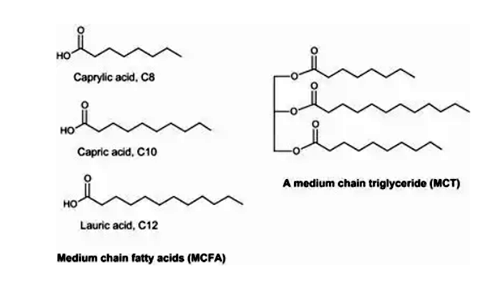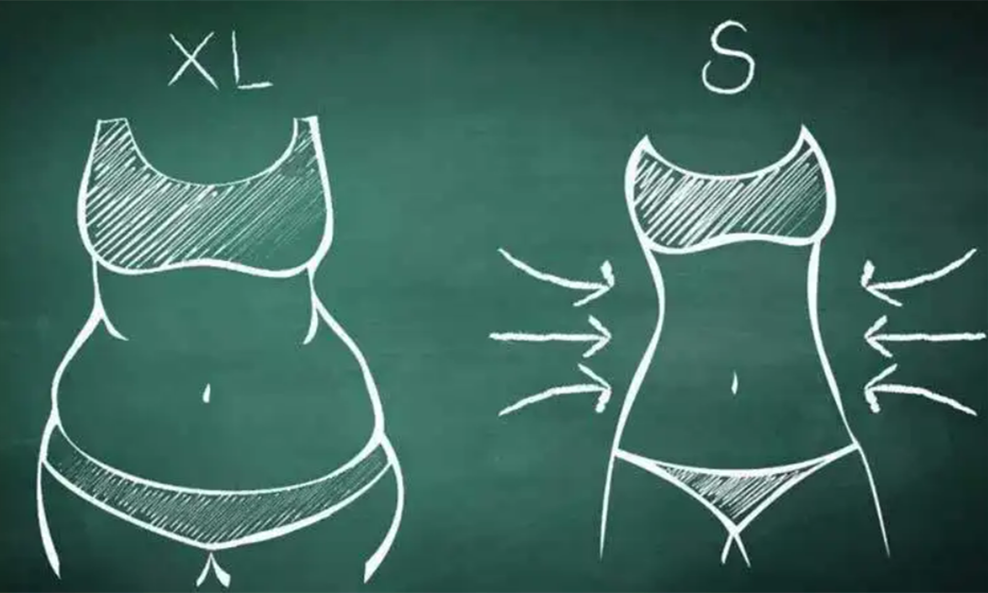Plant oils and animal oils are triglyceride fatty compounds. Triglycerides are made up of one molecule of glycerol and three molecules of fatty acids. Almost all fatty acids in nature contain even carbon atoms, usually with 2-24 carbon atoms. According to the number of carbon atoms in the fatty acid molecule, triglyceride acyl fatty acids can be divided into long chains (>12 carbon atoms), medium chains fat acid(6-12 carbon atoms), and short (<Six carbon atoms) fatty acids. By observing the caloric effect of food and fat accumulation of supermassive rats fed with MCT and LCT diets respectively, it was found that the caloric effect of food in MCT group was significantly greater than that in LCT group, and the content of body fat and abdominal fat was significantly lower than that in LCT group, and the effect was significantly better than that of long-chain triglyceride. What was the difference between them?
What is Long Chain triglyceride (LCT)?
Long-chain triglycerides, the most important component of dietary fat, are formed by combining fatty acids containing more than 12 carbon atoms with glycerol. In cooking oil, more than 95% of the ingredients are made up of long-chain triglycerides. The bulk of fat stored in the body is long-chain triglycerides.
What is medium chain triglyceride (MCT)?

LCT VS MCT
MCT has a faster digestion rate(hydrolysis)
Triglycerides are mainly emulsified into tiny colloidal droplets by bile acids in the small intestine and hydrolyzed into two fatty acids and one glycerol monomer under the action of pancreatic lipase, which are then absorbed by intestinal epithelial cells. Digestion of MCT is faster than that of LCT. MCT powder has better water solubility, and it is not bile emulsified in the small intestine. Its hydrolysis rate is 6 times that of LCT, and it is absorbed in the intestinal mucosal epithelial cells in the form of glycerin and MCFA.
MCT has a faster absorption rate
It takes only a few minutes for the fatty acids to be absorbed directly from the epithelial cells of the intestine and then into the bloodstream through the hepatic portal vein. Long-chain fatty acids must recombine with glycerol in the intestinal epithelial cells to form triglycerides, and then form chylomicrons with apolipoprotein, phospholipids and cholesterol before entering the blood circulation through the lymphatic system, which takes 3-4 hours.
Therefore, MCT are absorbed faster than LCT and are a nutrient that provides energy quickly.
MCT is more readily oxidized in catabolism
In liver and muscle tissue, catabolism of fatty acids takes place in the mitochondria of cells. Unlike long-chain fatty acids, medium-chain fatty acids enter mitochondria without the l-carnitine shuttle system. Or, their catabolism is not limited by the L-carnitine shuttle system. Therefore, medium-chain fatty acids are more prone to oxidation than long-chain fatty acids and can provide thermal energy at any time rather than being easily stored. In addition, due to the short chains of medium-chain fatty acids, they cannot be used as structural materials for fat cells without metabolic reactions that extend the carbon chain. The metabolic pathways of DIETARY MCT in the body are as follows:
- Oxidative decomposition. About 50% of the dietary INTAKE of MCT is oxidized. The main oxidative decomposition forms of MCFA are β -oxidation, ω -oxidation, ω -2 oxidation and ω -1 hydroxylation, which are eventually excreted from urine in various forms such as 3-,6- and 7-hydroxy-octanoic acid. The detection of dicarboxylic acid in urine has been used to evaluate the oxidation of MCT. However, the oxidation of MCT is not the only source of dicarboxylic acid in urine.
- Stored in the body as fat;
- Convert long-chain fatty acids. 13C labeling was used to trace the metabolic pathway of MCFA, and it was found that mymyritic acid (14:0) and palmitic acid (16:0) were generated, which was considered to be an important pathway for the transformation of MCT into LCT.
Long-chain fatty acids are partially hydrolyzed by lipase from tongue in the mouth and gastric juice. However, the upper part of the small intestine, where pancreatic lipase and colipase are secreted by pancreatic fluid, intestinal lipase from intestinal fluid, and bile from the gallbladder produced by the liver, is the main site for fat digestion. About 70% of the fat is hydrolyzed by pancreatic lipase. The ingested MCT is broken down by lipase in the stomach and duodenum into glycerol and medium-chain fatty acids (MCFA). The effect of MCT on gastrointestinal tract is different from that of LCT, and the inhibition of gastric emptyation (duodenal gastric feedback inhibition) is weak, but the stimulation of cholecystokinin release is stronger than that of LCT, and the stimulation of pancreatic secretion is the same as that of LCT. The oxidative metabolism and transformation rate of MCFA in liver is as fast as that of glucose, and the oxidation site is in mitochondria. When crossing the mitochondrial membrane, MCFA does not rely on Carnitine as a carrier as LCT, so the oxidation rate is faster than LCT.
MCT brings more energy consumption
Animal experiments were conducted to study the effects of MCT and LCT on lipid and energy metabolism, and it was found that MCT intake reduced body weight and feed efficiency compared with LCT intake. Studies in rats have shown that weight gain in rats injected with MCT is 1/3 of that in rats injected with LCT. It has been suggested that long-term replacement of LCT with MCT can lead to weight loss without reducing energy intake. Most population studies have also shown that MCT intake increases energy expenditure compared with LCT. Some human studies have shown that 54% to 85% of MCTS are oxidized for energy during endurance sports.
A Japanese study increased the percentage of fat in subjects’ diets, with about 1,000 calories coming from fat for every 2,500 calories consumed per day. A comparative study showed that compared with the LCT group, the MCT group had increased energy expenditure and fat oxidation and had no medium-chain fatty acids in their red blood cells. This suggests that medium-chain fatty acids do not accumulate in the body. And people who took MCT felt more full because of the increased rate of heating after digestion of foods containing MCTS compared to foods with the same caloric content of LCT.



